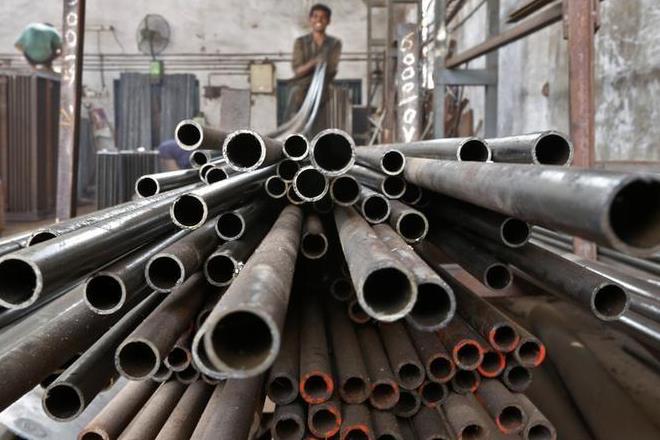The steel ministry will soon seek the Cabinet’s approval for a proposal to make the use of India-made steel mandatory for government-funded and related projects. Sources in the ministry said the proposal that, curiously, echoes Donald Trump’s “use-only US steel”, also has the support of the Prime Minister’s Office (PMO). Analysts said that the move would not only help consumption of domestically produced steel to grow faster, but would also further rein in imports. The government had in the recent past taken a slew of measures to protect the domestic industry from low-priced imports mainly from China, Japan, South Korea and other countries.
The measures include imposition of minimum import price (MIP) and anti-dumping and safeguard duties.
Ministry sources said around 20% of domestic steel is consumed by government agencies, PSUs and projects funded by the government at present. India had consumed 81.52 million tonnes (mt) of steel last fiscal, clocking a growth of 5.9% over the previous fiscal. During April-January of the current fiscal, consumption grew 3.5% to 68.89 mt.
The proposed move would also help India raise its per capita consumption, which currently stands at around 61.1 kg compared with the global average of 208.2 kg. India’s rural consumption of steel is even lower at just 9.78 kg per capita. The steel ministry is hoping to raise the per capita consumption further by another 10 kg in just three years. A series of initiatives has been taken up by the government to jack up consumption.
You might also want to see this:
The move, however, may not find favour among user industries as they fear the domestic steel industry might take advantage of the situation and jack up prices, which could prove to be counterproductive. In order to make the new policy a win-win for all, the steel industry will have to ensure not just quality products but also make sure that infrastructure firms get them at affordable prices. Steel falls in the deregulated sector in India.
In a recent report, CARE Ratings said it saw improvement in production as well as capacity utilisation of domestic steelmakers. It believes that steel production and consumption are expected to remain higher in 2017-18, backed by an increase in infrastructure allocation by the government in Union Budget 2017-18 and bettering of prices.


